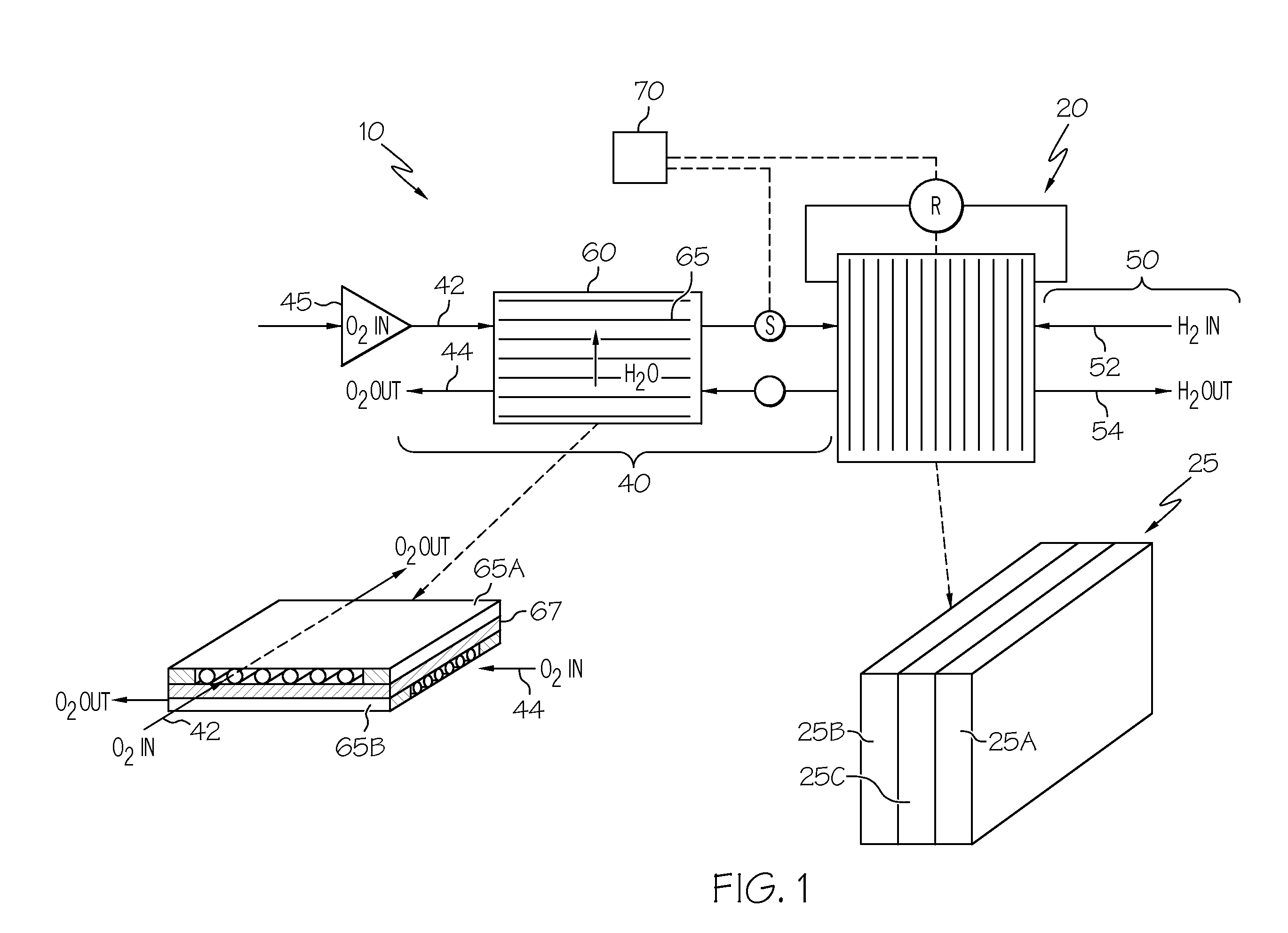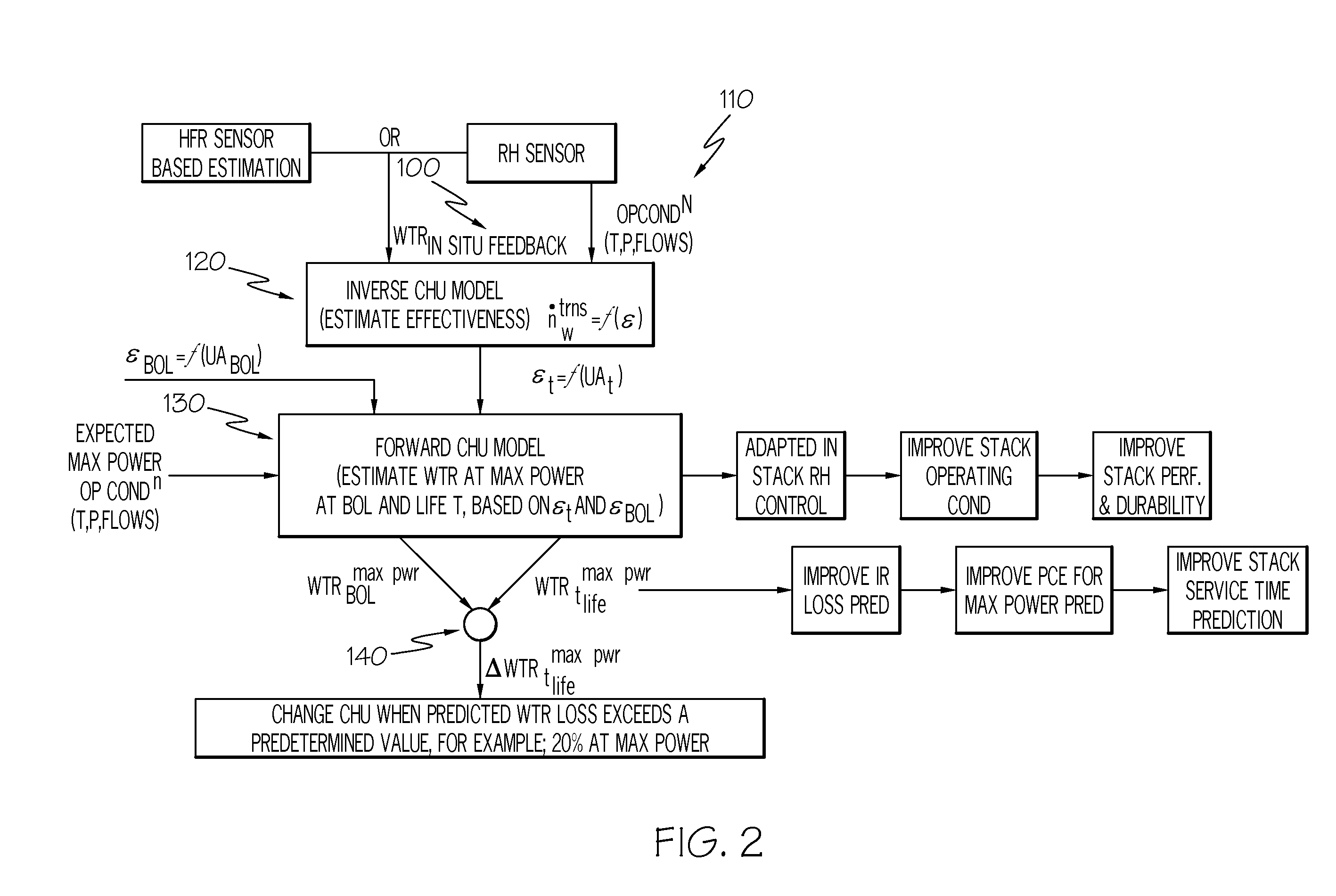Model Based Approach For In-Situ WVTD Degradation Detection In Fuel Cell Vehicles
a fuel cell and degradation detection technology, applied in the field of model based approach for in-situ wvtd degradation detection in fuel cell vehicles, can solve the problems of insufficient identification of issues related to wvt unit degradation or wear, poor electrical performance, premature cell failure, etc., and achieve the effect of accurate way to estimate and control relative humidity and loss of wvt unit effectiveness
- Summary
- Abstract
- Description
- Claims
- Application Information
AI Technical Summary
Benefits of technology
Problems solved by technology
Method used
Image
Examples
Embodiment Construction
[0016]Referring first to FIGS. 1 and 5, a fuel cell system 10 includes a fuel cell stack 20 made up of numerous individual fuel cells 25, each of which has an anode 25A and cathode 25B separated by an ion-transmissive membrane 25C, as well as an automobile 1 being powered by fuel cell stack 20 is shown. As will be understood by those skilled in the art, numerous such cells 25 are combined to form the stack 20 such that the power generation is increased. Likewise, numerous such stacks 20 may be used. Referring with particularity to FIG. 1, various flowpaths 40, 50 are used to convey reactants and their byproducts to and from the stack 20. A WVT unit 60 is fluidly coupled to either or each of the respective flowpaths 40, 50 to promote the balanced humidity levels within one or both of them. As shown with particularity for the cathode-side reactant (i.e., an oxygen-bearing fluid), dry air from a compressor 45 is fed through an inlet flowpath 42 into the WVT unit 60 Likewise, stack cath...
PUM
 Login to View More
Login to View More Abstract
Description
Claims
Application Information
 Login to View More
Login to View More - R&D
- Intellectual Property
- Life Sciences
- Materials
- Tech Scout
- Unparalleled Data Quality
- Higher Quality Content
- 60% Fewer Hallucinations
Browse by: Latest US Patents, China's latest patents, Technical Efficacy Thesaurus, Application Domain, Technology Topic, Popular Technical Reports.
© 2025 PatSnap. All rights reserved.Legal|Privacy policy|Modern Slavery Act Transparency Statement|Sitemap|About US| Contact US: help@patsnap.com



